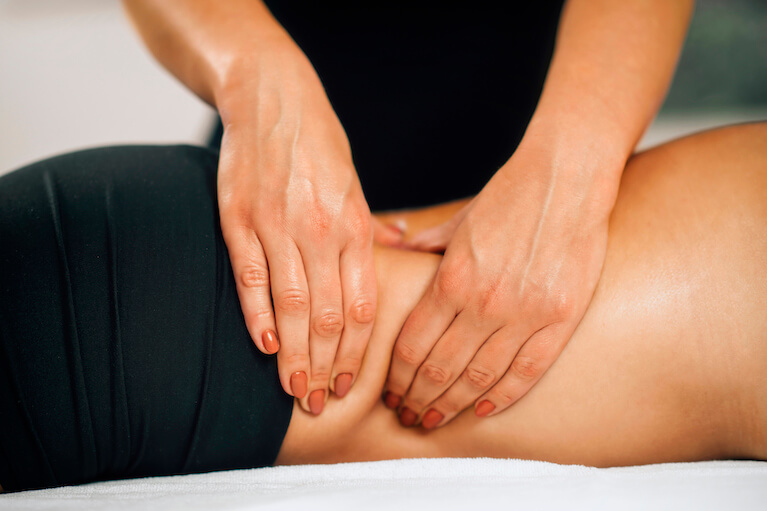Deep tissue massage involves applying firm pressure and slow strokes to reach a deeper level of muscles. When we hear about this type of massage, it usually comes to our mind that therapists should penetrate deep into the muscle tissues and work between the tissue muscle fibers. But it’s only a misconception. It’s not exactly the case. Therapeutic massage works to reach the deeper layers of your muscle and it is not necessary to apply deep pressure. Deep tissue massage works in such a way to give relief from the tension, reduce stress, improve blood circulation in the body and remove accumulated toxins from the body, and as are a result you look fresh and feel energized. It is very helpful for chronic pain including neck and shoulder pain, lower back pain, legs, and thighs inflammation, etc.
Some of the techniques of Swedish massage and deep tissue massage are similar but the difference is in the firmness and level of applying pressure. Deep pressure with slow movement is required in deep tissue massage. In the beginning, lighter pressure is required so that body becomes warm and then slowly and gradually we go towards the deep pressure. This type of deep tissue massage is beneficial in breaking scars and muscle knots that form due to severe muscle tension. This muscle tension is very harmful to the body as it causes immobility of the muscles, disturbance in blood circulation, and inflammation.
Techniques for deep tissue massage:

Active movement: this technique of deep tissue massage involves a client and therapist working together, the client tends to relax and flex the muscle and the therapist applies pressure on it. When we flex the muscle, muscle fibers got separated and therapists are able to work between the muscle fibers. On the other hand, when we stretch the muscle, they become softens and therapists are able to work deeper on the muscles.
Passive movement: This technique is much more like an active movement technique with the difference is that therapist is utilizing both hands. With one hand therapist is applying pressure and with the other hand is moving the body. This technique sounds relaxing for the client but may be taxing for the therapist to apply.
Static pressure: In this technique, the therapist is using his body parts including fingers, thumbs palm, and even elbows in order to apply pressure on the stiff points on the body. For relaxation and deep penetration, it is necessary to move slowly. It requires at least twenty minutes for an individual muscle and sometimes this process is painful too.
Beneficial aspects:
Deep tissue massage is very beneficial in reducing muscle tension and relaxing the body. Besides this, there are lots of potential benefits including:
- Reduction in lower back pain and limited mobility
- Helps in fast recovery from the injuries
- Improve posture problems
- Relief from back and neck pain
- Release tension from legs and arms muscles
Precautions and side effects:
At some point during the massage, you may feel pain and maybe discomfort because the therapist is working on the areas that have adhesions and scars. So if you are feeling pain tell your therapist so that he can adjust the techniques according to your convenience. Deep tissue massage is not recommendable for people having blood clots in the body because the massage will dislodge the clot and it can cause serious complications. If you are suffering from other serious physical problems you should consult your therapist before having a massage. Explore our massage services or Book Now

